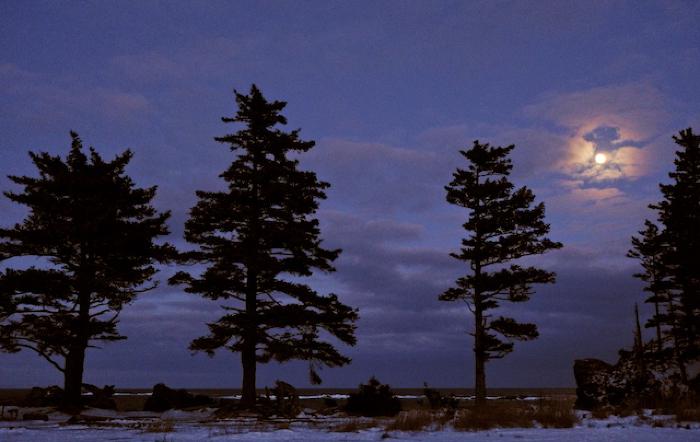Night — Unuk

In the northern hemisphere, the autumnal equinox is the September day when the sun shines directly on the Earth’s equator, creating roughly equal periods of light and darkness. The equinox is the official first day of fall. In Alaska, however, the season is well underway. Signs of the on-coming winter are widespread—cooling temperatures, migrating birds, colorful leaves, and a dusting of snow in the mountains.
From this point forward, daylight diminishes noticeably. Sunrise comes later and night falls sooner. After the equinox, the Kodiak Archipelago loses up to five minutes of daylight a day, culminating with the winter solstice in late December. This is the longest night of the year with over seventeen hours of darkness between sunset and sunrise.
In Alutiiq legends, night is a secretive, often dangerous time when treachery and magical acts take place. In one legend, a man puts on an eagle skin, captures a whale, and places it in front of a village. In another, a shaman spends the night helping a hunter who has been transformed into a bear. He wrestles the bearskin off the man to reveal his human form. Winter nights are also the time when the aurora borealis fills the sky. Elders say that it is dangerous to dance when the northern lights are out. They tell of two old people who hid in a steam bath when the younger generation failed to heed their warning and continued to dance. They emerged to find all of the dancers decapitated. This is probably both a warning about the supernatural things that can happen at night and a reminder to listen to one’s Elders.
